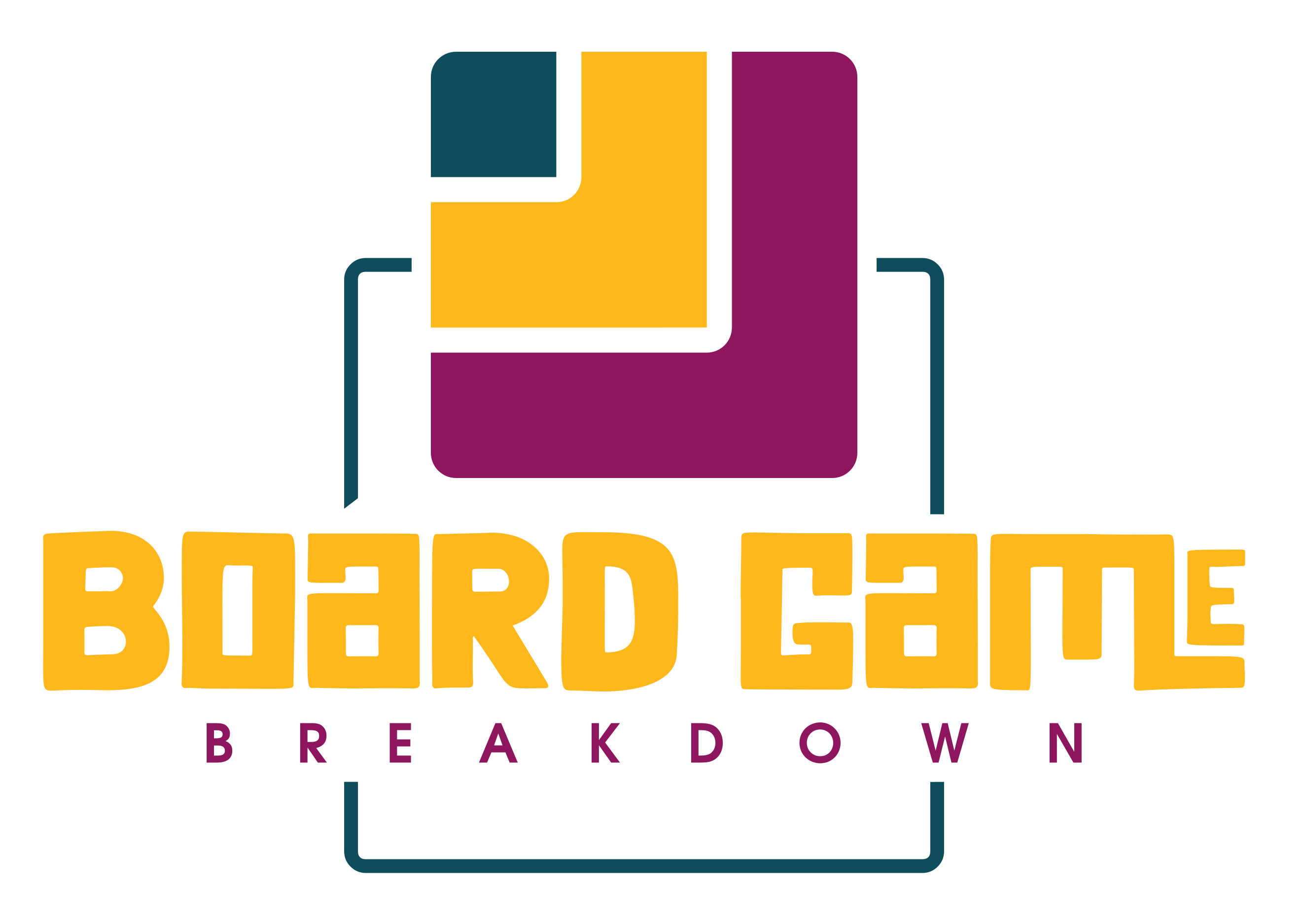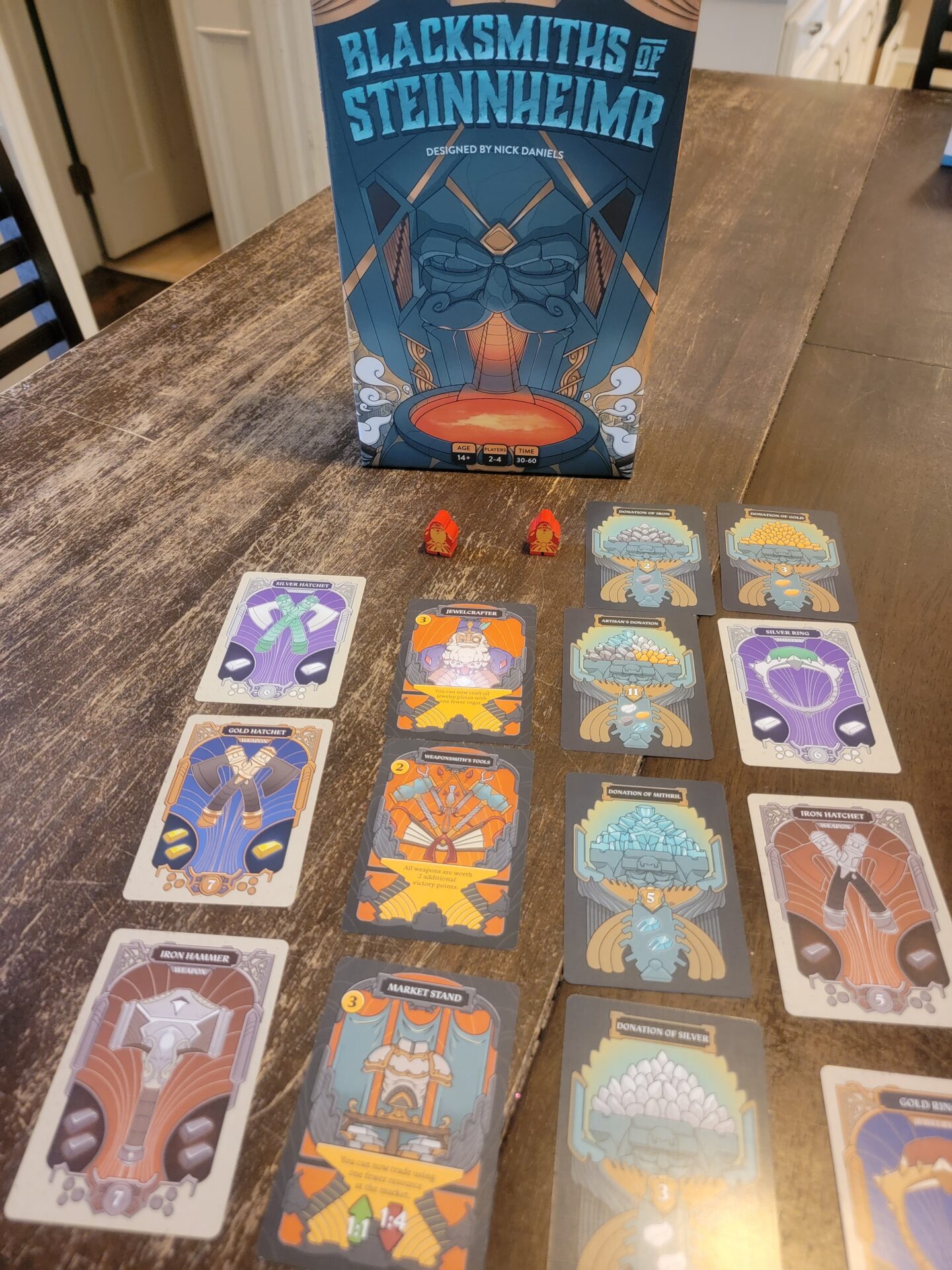
Name: Blacksmiths of Steinheimr
Year of Release: 2023
Player Count: 2 – 4
Playing Time: 30 – 60 Minutes
Designer: Nick Daniels
Publisher: Runeshield Games
Primary Mechanisms: Contracts, Worker Placement, End Game Bonus
Weight (According to BGG.com): 2.00
Overview
I, by no means, am a Kickstarter junkie. I’ve backed a few things by designers or publishers I am already familiar with and that is about it. I’m not a huge fan of how most creators on Kickstarter use the tier system nowadays so it was a refreshing moment when I came across Blacksmiths of Steinheimr. The campaign was simply laid out: here is the game we want to make and we’re not saving extra content to unlock or make into an expansion. We simply need this amount of money, and if you help us, you’ll get this game we’re promising. I had been looking for a quicker game that might help introduce my kids to some of the more modern board game mechanics but in a package they could easily grasp. My 8-year-old is increasingly wanting to play “daddy’s games” with me, but it isn’t like I’m about to bust out Ark Nova and teach it to her.
Blacksmiths has finally hit the mailbox, so let’s take a look at how the finished product came out.
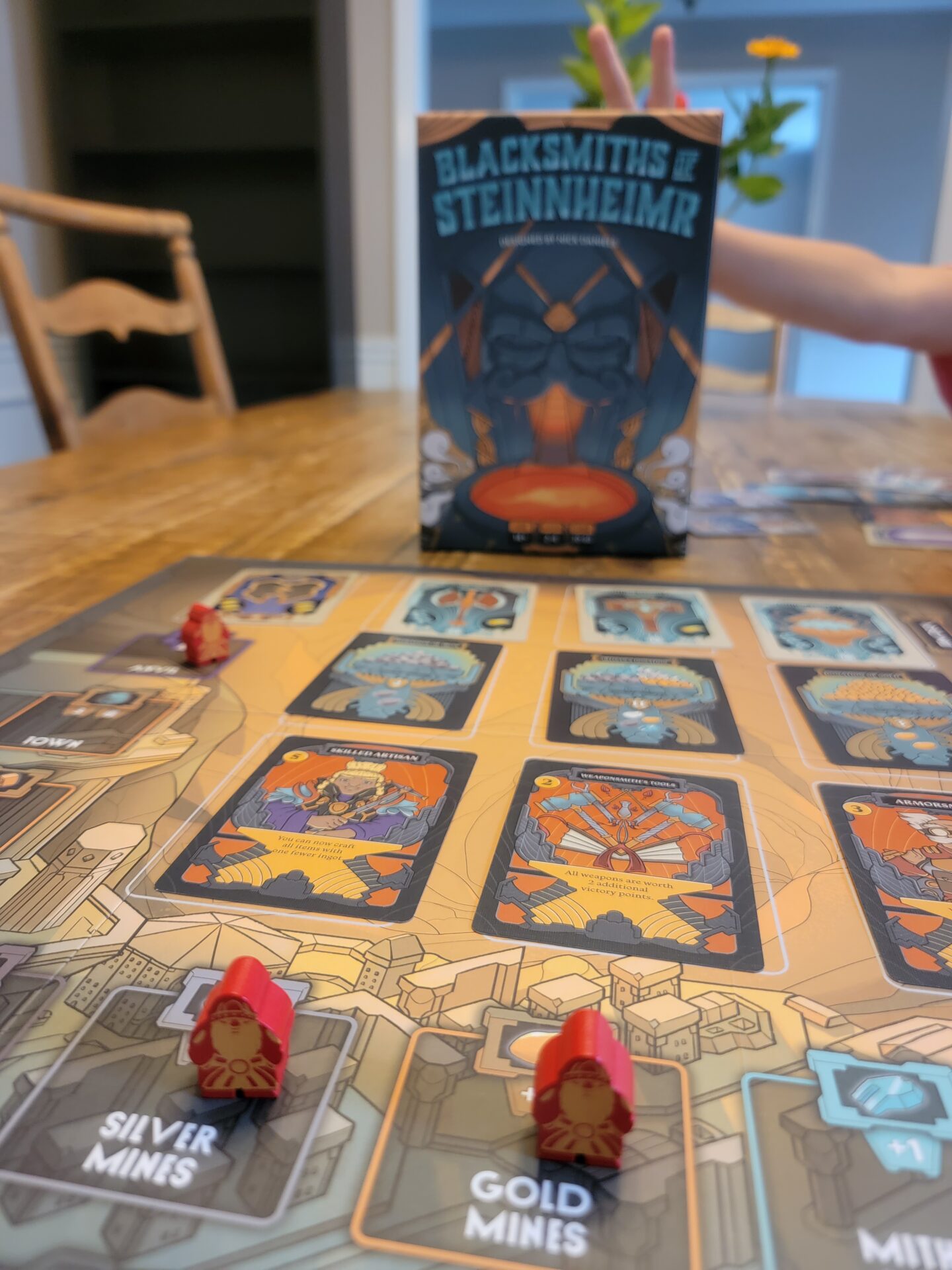
Rulebook & Components
The rulebook with Blacksmiths is a concise affair, laying out everything easily for the players. There is basically one page for setup, two pages for gameplay, one page for scoring, and another page that acts as a reference page. Easy enough, eh? With a game of this weight, you definitely don’t want the designer trying to over-complicate things and thankfully, that doesn’t happen here.
The components are made up of four different deck of cards (108 cards in total) 80 resource tokens (in Iron, Silver, Gold and Mithril), 30 Coin tokens, 7 Dwarf Meeples, and of course, the Game Board. The Dwarf Meeples are absolutely wonderful. They aren’t you’re standard, lifeless meeple, but instead are dwarven shaped, colored red, with gold screen printing of a big, bushy beard, and a few other details. The four decks are comprised of the Item Deck, Guild Deck, Town Deck, and Bonus Objective Deck. The artwork on the cards is stylistically pleasant and matches with the rest of the game but I wish the Town Cards were a little more creative. These cards all just show a pile of the related Ore and are lackluster compared to the Item and Guild Cards.
All-in-all, I’m very happy with the quality of these components, especially from an indie production’s debut game.
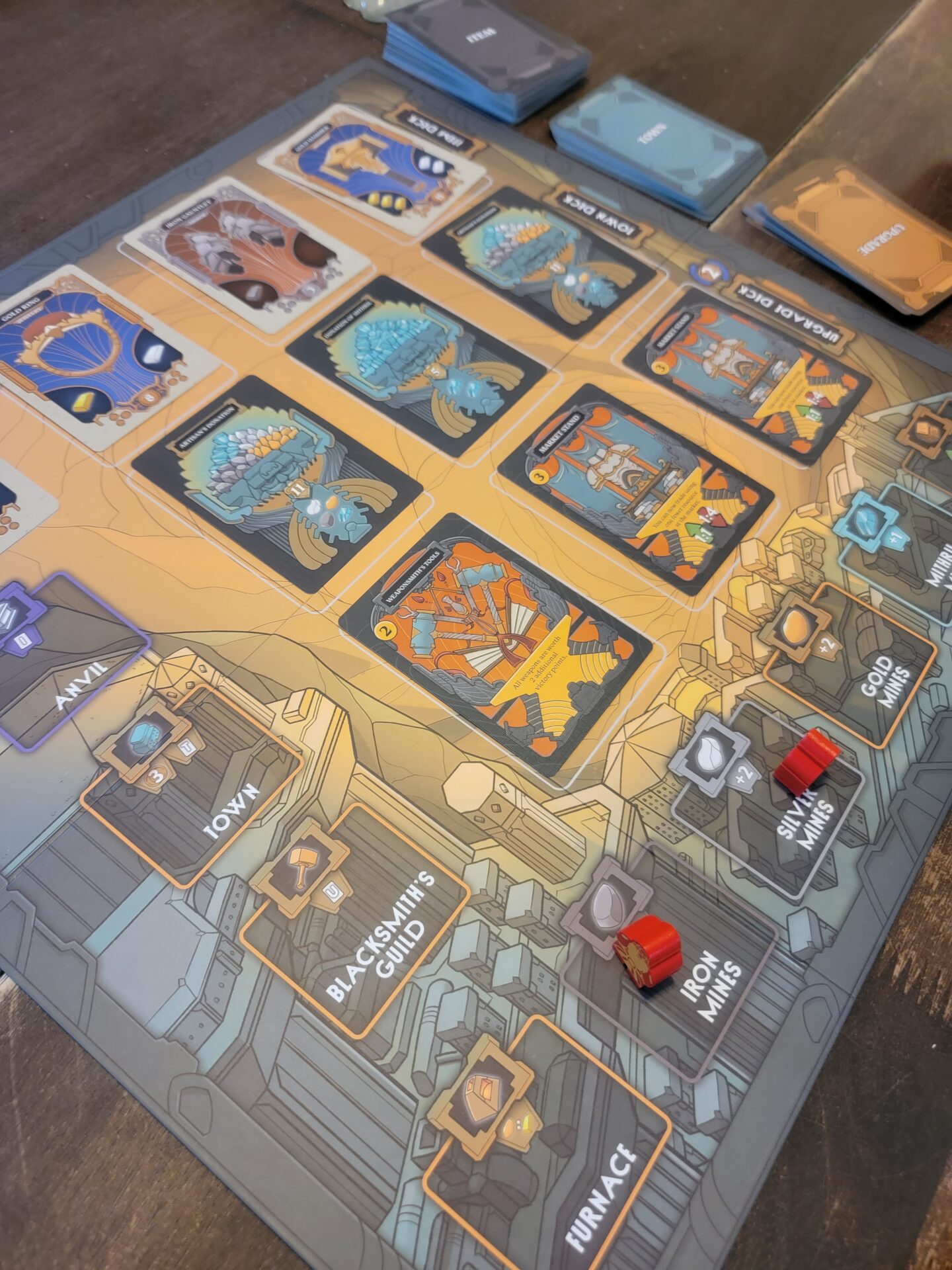
Setup & Gameplay
As you’ll probably guess from the components list, setup for Blacksmiths of Steinheimr is going to be a breeze. There’s shuffling of the four decks and then you turn over three or four (depending on the deck) of the cards and place them in their corresponding rows on the board. Additionally, two Bonus Objective cards are chosen and placed next to the board. This helps to add some variety to each game, giving players an added goal to shoot for.
Piles of the Resource Tokens and the Coins are made. You’ll notice that the Resource Tokens are double-sided, one side showing Ore and the other showing Ingots. This is an important distinction, and we will discuss more in the gameplay section. Lastly, three Dwarf Meeples are always placed on these three action locations: The Furnace, The Silver Mines, and The Market. For each individual player, they are given two Coins and one Dwarf Meeple, a starting player is chosen, and the game is ready to begin.
During the game, each player will take two actions, but they must always be in the following order:
- Place a Dwarf Meeple at an empty location and then trigger that action.
- Remove a Dwarf Meeple from a location and then trigger that action.
Unlike most worker placement games, the pool of meeples is shared, so nobody necessarily has their own dwarves they are controlling. So, what are the actions that these dwarves can help you accomplish in the town of Steinheimr?
The bottom row of actions is mostly made up of the different Mines. When visiting a mine, the player will take the appropriate number of Ore from that specific resource. The lesser valued the Ore (Iron < Silver < Gold < Mithril) the more tokens you’ll get to take from visiting a Mine. On the bottom row there is also a Market that will help players trade in their resources for other types without visiting the Mines. The last space on the bottom row is reserved for the Furnace, where players can turn their Ore into Ingots, basically by flipping over the resource token to the opposing side. This act is important as we move into the rows of cards taking up the rest of the real estate on the board.
The three rows of cards each have their own action location associated with them, allowing players to visit that spot and then pay the required resource to draw a card from the row. If a player has Ore, they can visit the Town and purchase cards that will award Victory Points at game end. A player might have already visited the Furnace multiple times and instead of having Ore, they’ll have a slew of Ingots. In this case, they’ll want to visit the Anvil, where they can purchase Item Cards. These cards give the most Victory Points and both these, and the Town Cards, will trigger the last round when enough of them have been forged or when the deck runs out, respectively. The last row is where players can visit the Blacksmith’s Guild, allowing them to spend their Coins on Upgrade Cards. While these cards won’t award Victory Points, they will make many of the actions a lot easier throughout the game. And if there aren’t any useful Upgrade Cards in the row, players can spend two Coins at any point to refresh the row. Once the game comes to an end, all players count up their Victory Points and determine which players win each of the two Bonus Objective Cards. Once these bonus points are added, the player with the most points are deemed the Champion Blacksmith of Steinheimr and their name will ring through the hallowed forges for ages to come!

Conclusion
We’ve had a blast with Blacksmiths of Steinheimr since it arrived. It plays fast enough and is compact enough that you can squeeze it into almost any game session. Our family recently had a long layover in an airport and we busted this game out and played it right there on the floor and everyone had a wonderful time. It’s great to see indie developers getting to do what they’re passionate about and put out such a great game. I highly recommend, if you like what you’ve read here, to pick up a copy ASAP and get to forgin’!
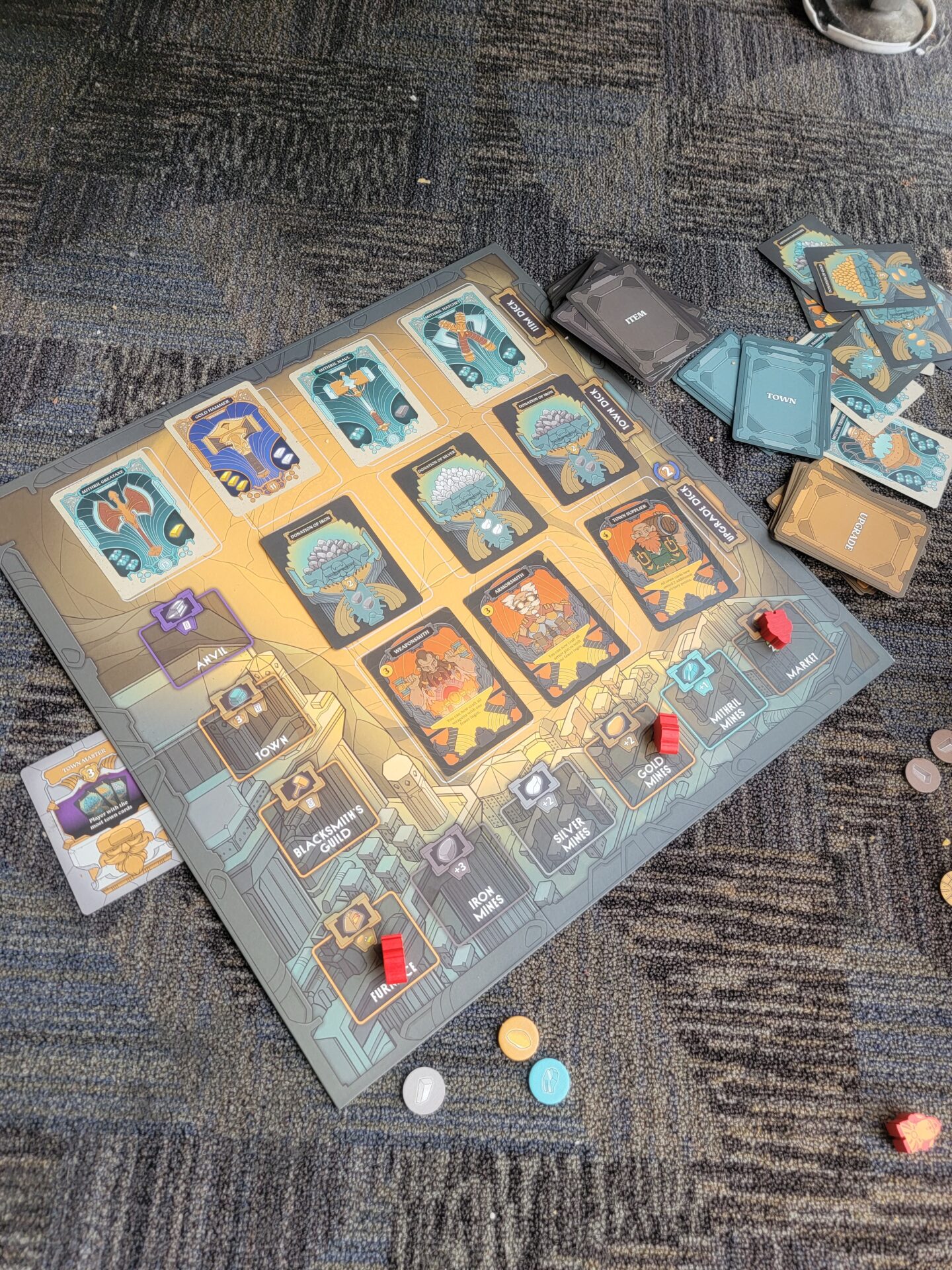
Rating
Ratings are based on 5 main criteria: rulebook, setup, components, art & graphic design, and gameplay. The first 4 criteria are rated 1 to 5 and the gameplay is rated 1 to 10. These scores culminate in an “overall satisfaction” score that is rated from 1 to 10. If the reviewed game has both a solo and multiplayer mode, I have assigned scores separately to give context to which mode we enjoy more.
Links
Kickstarter: Blacksmiths of Steinnheimr by Runeshield Games — Kickstarter
